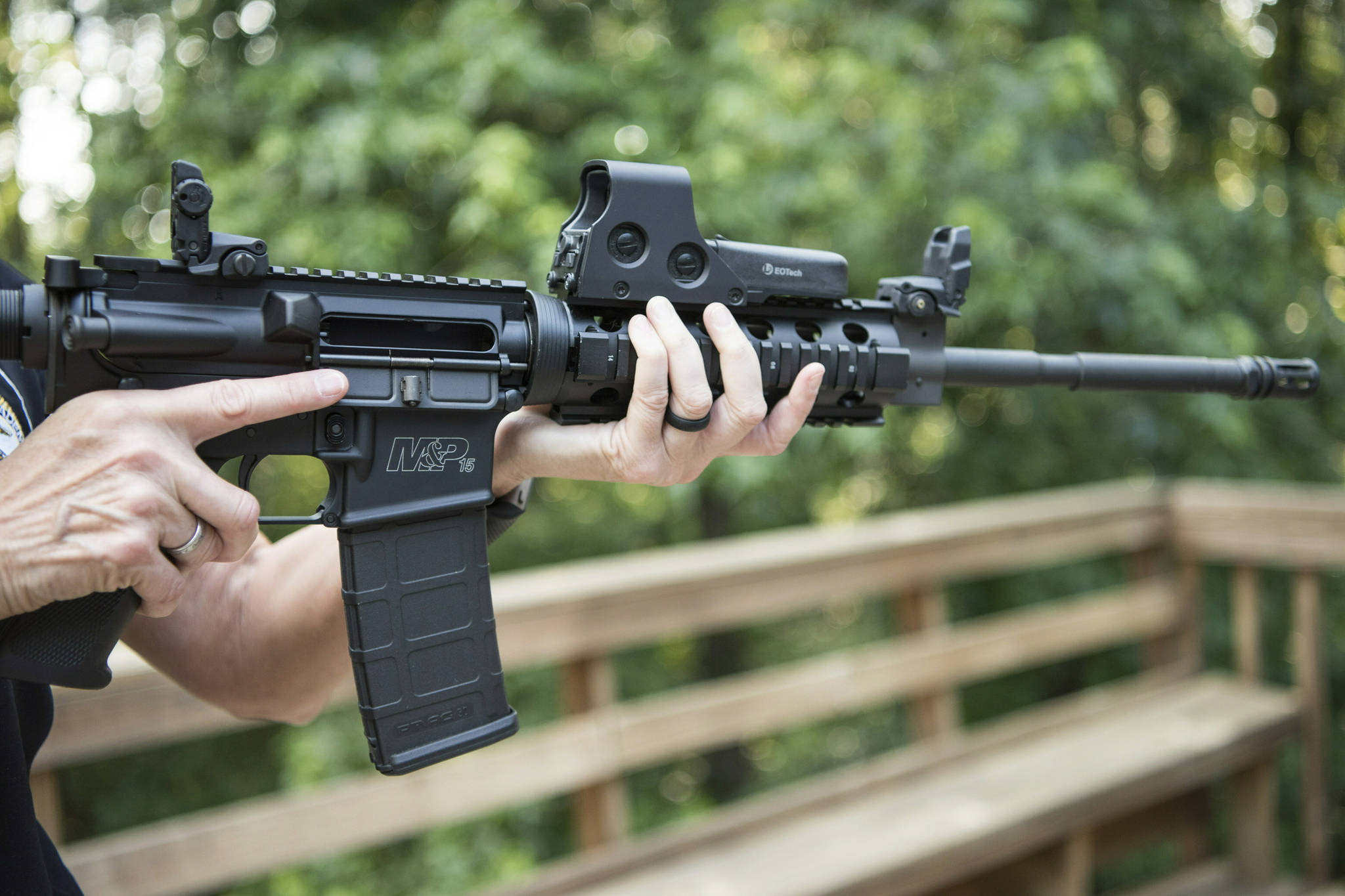Inappropriate use of authority by a government official is the central theme behind the suspension of Marti Buscaglia, the executive director of the state Commission for Human Rights. Below that, freedom of speech, the right to bear arms, gun safety, racial injustice, mass shootings and more are competing for attention.
[Chairman of Alaska rights commission quits amid rifle sticker controversy]
And the thread that ties them together is the idea that freedom isn’t free. It always comes with responsibility to the society that grants it.
This story began in an Anchorage parking lot where the commission is located. Brent Linegar, the owner of Sage Mechanical, parked his company truck there. On the tailgate was an image of an AR-15 rifle over the words “Black Rifles Matter.”
After seeing it, Buscaglia wrote on the back of her business card, “Please do not park this truck with that offensive sticker in this parking lot.” It was left on the windshield. Then, turning to the minimally informed pool of jurists on social media, she posted a photo of the truck and sticker on the commission’s Facebook page. The caption asked: “In what world is this OK?”
[Opinion: New Zealand’s quick action on gun control shames the US Congress]
On the main issue, Buscaglia was out of line attempting to establish rules about messages that can be displayed on private vehicles parked there. That it’s a privately owned lot shared by the Municipality of Anchorage made it a bigger mistake. And it was even more egregious if, as reported in the Alaska Landmine, she emailed the property owner implying “Linegar was a racist” and “accused Sage Mechanical of performing substandard work and exercising poor judgment.”
For a public employee responsible for overseeing enforcement of the Alaska’s Human Rights laws, one would expect Buscaglia to know offensive speech is protected by the First Amendment. Further, she should have understood it’s wrong to attach a stereotype to anyone. And she shouldn’t have expected a politically correct censoring act to solve anything.
But let’s not pretend there’s a universally accepted meaning to the sticker. Leingar told the Alaska Landmine he got it at an event “promoting Second Amendment rights and the safe and appropriate handling of firearms.” That may be what he believed it spoke to, but that doesn’t preclude anyone else from seeing a different message.
[Opinion: Where’s the adult leadership on gun violence?]
To suggest that there’s no possible racist interpretation is to ignore the obvious reference to the “Black Lives Matter” movement. That doesn’t justify extrapolating into a racist statement. But ignoring the connection is like arguing the “My kid beat up your honor student” bumper sticker had nothing to do with the “My child is an honor student” one that came first.
It’s also reasonable for people concerned with the plague of mass shootings in America to feel offended by the sticker. In fact, it’s hard to imagine anyone traumatized by massacres like Sandy Hook and Marjory Stoneman Douglas High School not being repulsed by it.
Furthermore, the Second Amendment isn’t a simple binary debate. Not everyone who supports the right to bear arms believes it should extend to weapons like the one depicted. And not everyone who advocates for stricter gun control legislation wants to strip Americans of the right to own handguns and hunting rifles.
[Opinion: Why you should care about this wildlife court case]
My point is that although bumper stickers are also protected by the First Amendment, putting them on a car is speech in its lowest form. In most cases, to the person reading them, the speaker is hiding behind the face of anonymity. Their statements are limited to what the owner is for or against, which, on complex issues, is an invitation to be misunderstood.
The First Amendment doesn’t compel us to listen to people with different viewpoints. It offers no assistance for navigating the nuances of our disagreements. That’s why it’s permissible for some to only see the gun rights message in the “Black Rifles Matter” sticker and others to believe it contains a racist element. And both sides are free to publicly express their view.
But we all have the responsibility to do more. If we don’t like being mislabeled, we should understand the full range of possible interpretations of the simple messages we display. And we should be prepared to apologize for and mitigate any harm caused when we’ve erred in the exercise of our freedom of speech.
Rich Moniak is a Juneau resident and retired civil engineer with more than 25 years of experience working in the public sector.
• Rich Moniak is a Juneau resident and retired civil engineer with more than 25 years of experience working in the public sector. He contributes a weekly “My Turn” to the Juneau Empire. My Turns and Letters to the Editor represent the view of the author, not the view of the Juneau Empire.


